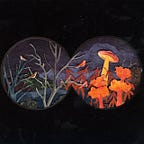The Komodo dragon (Varanus komodoensis) is undoubtedly one of the most enigmatic creatures on Earth. Native to the Indonesian islands of Komodo, Rinca, Flores, and Gili Motang, these ancient reptiles have captured the imagination of scientists and adventurers alike. So today, we will delve into the intriguing world of Komodo dragons, exploring their behavioral habits, survival strategies, family adaptations, and some of the most mysterious scientific facts about them.
Behavioral Habits
- Social Behavior: While primarily solitary, Komodo dragons exhibit social behaviors, particularly during mating seasons. These behaviors are often driven by hormonal changes. When males are in the presence of females, they may engage in dominance displays, such as head bobbing and tongue-flicking, as well as physical confrontations. These displays and interactions help establish dominance and access to mates.
- Thermoregulation: Komodo dragons are ectothermic, which means they cannot regulate their body temperature internally as mammals do. Instead, they rely on external sources of heat. They bask in the sun to raise their body temperature and become more active. This behavior helps them with digestion and metabolic processes. Conversely, they seek shade or water to cool down when their body temperature becomes too high. Maintaining an optimal temperature range is crucial for their overall health and activity.
Habitat Modification for Thriving:
- Burrow Construction: While they are primarily terrestrial, Komodo dragons often dig burrows. These burrows serve as both shelter and a means of temperature regulation. During the hottest part of the day, they retreat into their burrows to avoid overheating. Burrows also provide a secure location for resting and, in the case of females, nesting.
- Territorial Marking: Komodo dragons have territorial behaviors, and they use scent markings to establish and maintain their territories. They may rub their bodies against objects, like rocks or trees, to deposit scent from glands in their cloaca. This scent-marking behavior communicates their presence to other dragons and helps minimize conflicts by defining territory boundaries.
- Resource Management: Komodo dragons are opportunistic predators. They often drag large prey items to a specific location to consume over time. This behavior reduces the risk of scavengers stealing their food and allows them to feed intermittently, which can be more energy-efficient.
Killing Strategy
- Biting Prey: Komodo dragons deliver a forceful bite using their sharp, serrated teeth. The venom of Komodo dragons is produced by specialized glands located in their lower jaw. These glands secrete a mixture of toxic proteins and peptides. The exact function of the venom is still under investigation, but it is believed to serve two main purposes: to induce shock and weakness in prey, making them easier to capture, and to initiate bacterial infections when the Komodo dragon’s serrated teeth introduce pathogens into the wound. The combination of these factors can lead to the eventual demise of the prey
- Tracking Prey: The remarkable sense of smell in Komodo dragons is attributed to their advanced olfactory system, which includes a vomeronasal organ (Jacobson’s organ). This organ allows them to detect and follow scent trails over long distances. When they wound prey, they can track it for several kilometers, even if it tries to escape. This ability to follow the scent of injured or weakened prey is a crucial part of their hunting strategy.
Family Adaptations
- Mating Season: During the breeding season, males undergo physiological changes that include an increase in testosterone levels. This hormonal surge triggers heightened aggressiveness and territoriality. Male Komodo dragons may engage in combat to establish dominance and gain access to receptive females for mating. Mostly their mating season is between June and August which is a dry season on most of the islands.
- Nesting: Female Komodo dragons lay their eggs in underground nests, which they dig themselves. These nests provide protection and help regulate the temperature and humidity levels necessary for egg development. After laying the eggs, females do not provide any further care to their offspring. Hatchlings emerge from the nest and must fend for themselves from birth, relying on their innate behaviors and instincts.
Some Fun Facts About Varanus Komodoensis
- They Are Living Fossils: The concept of “living fossils” refers to species that have remained remarkably unchanged over geological time scales. Komodo dragons are often considered living fossils because their basic body plan and ecological role have remained relatively stable for millions of years. This evolutionary stability provides insights into the long-term persistence of certain lineages in the evolutionary tree of life.
- Parthenogenesis: Parthenogenesis in Komodo dragons is a phenomenon in which unfertilized eggs develop into viable offspring. This process occurs through a series of genetic and cellular mechanisms. In some cases, female Komodo dragons can reproduce asexually under specific conditions, leading to the production of female offspring that are genetic clones of the mother. This reproductive strategy highlights the adaptability and flexibility of Komodo dragons in challenging environments. But when these females reproduce asexually they create their genetic clones, so due to this genetic diversity is at risk, parthenogenesis is a very rare process as it occurs sporadically. It seems adaptations of mother nature are beyond our minds.
That’s It We are done about Komodo dragons……………. Shubham Bhavatu :)
